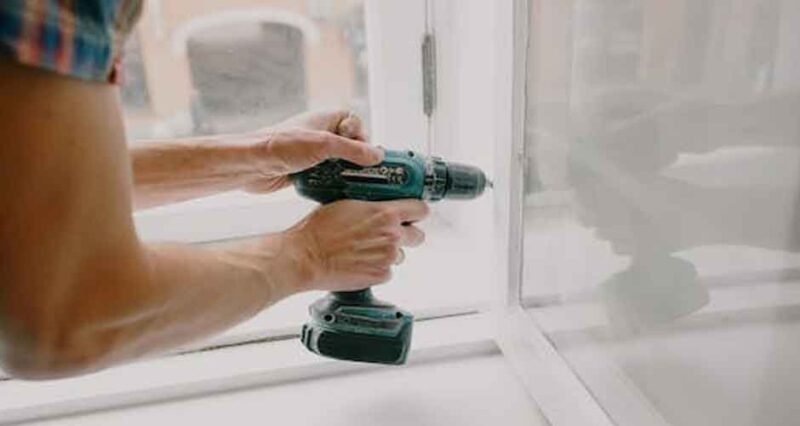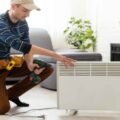
A home is more than just a place to live; it’s an investment that requires ongoing care. In order to keep it in top shape, certain tasks shouldn’t be overlooked. Regular maintenance can extend the life of various components of your home, prevent costly repairs, and maintain its value. Though the list of household chores might seem endless, prioritizing a few essential tasks can make a world of difference.
This article delves into six critical maintenance duties that, when performed consistently, can safeguard your home’s health and enhance its longevity. By dedicating a little time to these tasks, you can enjoy a safer, more efficient, and comfortable living space.
1. Test Smoke Detectors
Smoke and carbon monoxide detectors are crucial safety devices in every home. Their primary function is to alert you in case of a fire or a dangerous carbon monoxide leak, both of which can have life-threatening consequences. Regularly testing these devices ensures they are always ready to safeguard you and your loved ones.
At least once a month, you should manually test these detectors by pressing the test button. This simple action can give you the confidence that they’re functioning as they should. If you ever hear a chirping sound from the detector, it’s typically an indicator that the batteries are low and need replacement. While it’s recommended to replace batteries twice a year, ensuring their optimal performance is crucial.
During such maintenance checks, it might also be a good time to inspect other essential household systems. Many homeowners combine their safety inspections with checks on their heating, cooling, and plumbing services. Regularly monitoring these not only ensures a cozy atmosphere year-round but also helps avoid sudden disruptions. Ensuring they’re running smoothly can prevent unexpected breakdowns and potential hazards. For instance, malfunctioning heating systems could be a fire hazard, while plumbing issues might result in water damage. Maintaining a watchful eye can be the difference between a minor repair and a major renovation, saving time, energy, and money.
2. Inspect and Clean Gutters
Gutters play a vital role in directing rainwater away from your home, protecting its foundation, walls, and landscape. Over time, however, they can become clogged with leaves, twigs, and other waste. This obstruction not only prevents water from flowing freely but can also cause gutters to subside or even break under the weight. It’s essential to inspect and clean your gutters at least twice a year—once in the spring and again in the fall.
During these checks, remove any scrap, ensuring water can flow without hindrance. While cleaning, also look for signs of rust, holes, or any parts that have come loose. Secure or replace any damaged sections promptly. By keeping your gutters clean and in good repair, you prevent potential water damage to your home and maintain the integrity of its structure, saving you future repair costs and hassles.
3. Check Your Water Heater
The water heater is one of those appliances we often take for granted until it stops working. Regular inspections and maintenance can ensure it provides consistent hot water when you need it most. Over time, remains from dirty and stony water can accumulate at the bottom of the tank, reducing the heater’s efficiency and potentially leading to heavy wear and tear.
At least twice a year, it’s wise to drain a few gallons from the tank to remove this residue. This action can prolong the life of your heater and ensure optimal performance. Also, visually inspect the unit for signs of leaks, rust, or wear. Any unusual noises or a decrease in the amount of hot water supplied can indicate a problem. By regularly checking and maintaining your water heater, you can ensure its longevity, saving money on potential replacements and energy bills.
4. Check Your Roofing
The roof is your home’s primary defense against external elements like rain, snow, and sun. Over time, even the sturdiest roofs can show signs of wear, which, if left unchecked, can lead to leaks and costly repairs. It’s essential to inspect your roof regularly to catch any potential issues early on.
At least twice a year, preferably during the spring and fall, do a visual check. Look for damaged, missing, or curling shingles, as these are indicators of wear and tear. Additionally, areas around chimneys, vents, and skylights should also be examined for any signs of damage or wear.
Regular roof checks can help identify problems when they’re still minor, making repairs more manageable and less expensive. A well-maintained roof not only ensures the safety and comfort of your home but also enhances its overall value and aesthetics.
5. Seal Windows and Doors
Windows and doors are key access points where cold or hot air can infiltrate your home, leading to increased energy bills and an uncomfortable living environment. Over time, the seals around these areas can deteriorate, allowing dirt to creep in. It’s essential to inspect your windows and doors annually. Visually check for gaps, cracks, or damaged weather stripping. If you detect any issues, sealing them promptly using weatherstripping or lining can make a significant difference in the insulation of your home.
By ensuring a tight seal around windows and doors, you can enhance your home’s energy efficiency, leading to notable savings on heating and cooling costs. Plus, this simple maintenance task can elevate your home’s comfort, keeping it cozy in the winter and cool during the summer months.
6. Inspect HVAC Systems
Your Heating, Ventilation, and Air Conditioning (HVAC) system is a central component of your home’s comfort. Ensuring its optimal operation not only guarantees a cozy environment year-round but can also save you money on energy bills. Regular inspections are pivotal in catching minor issues before they escalate into major problems.
At least once a year, preferably during the transition between seasons, you should inspect your HVAC system. Check for any unusual noises, inconsistent temperatures, or reduced airflow. Changing or cleaning filters is a crucial maintenance task, but you should also inspect vents and ducts for any blockages or dust. A well-maintained HVAC system runs more efficiently, reducing wear and tear on the components and extending its overall lifespan. By regularly inspecting and addressing minor issues, you can avoid unexpected breakdowns, ensuring a comfortable and cozy living environment for your household.
Conclusion
Every home, regardless of its size, requires regular maintenance to remain in prime condition. By giving attention to essential tasks like inspecting the HVAC system, checking the roof, sealing windows and doors, and other duties, as mentioned above, homeowners can ward off major issues and hefty repair bills.
Think of these maintenance activities as a form of self-care for your home, ensuring it stays comfortable, safe, and efficient. The time and effort invested now can save you significant hassle and expense in the long run. Moreover, a well-maintained home enhances its value and provides peace of mind, knowing that you’re taking proactive measures to protect your investment and the well-being of your loved ones. Embrace these simple tasks as a routine, and your home will surely reward you for years to come.

